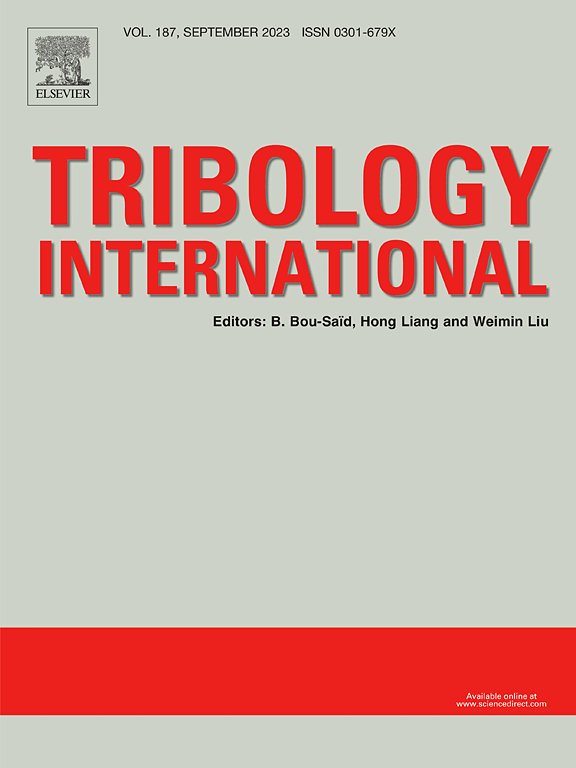Cage parameters on friction within cage-pockets contacts and lubrication behaviors in ball-raceway contacts
IF 6.1
1区 工程技术
Q1 ENGINEERING, MECHANICAL
引用次数: 0
Abstract
The dynamic motion of the cage and rolling elements in rolling bearings significantly influences lubricant redistribution and film formation. To investigate these complex interactions, a novel imental apparatus was developed by integrating a cage measurement unit into a ball-on-disc optical elastohydrodynamic lubrication (EHL) test rig. The influence of cage pocket positions, cage dimensions, grooved surface textures, and grease properties on film thickness and friction forces at the ball-raceway and ball-cage interfaces were studied. Results showed that the cage plays a crucial role in enhancing ball-raceway lubrication by redistributing lubricant across ball surfaces, with its effectiveness governed by positional clearances, grease type, and cage design. The lubrication state of the ball-raceway interface was found to be closely linked to the cage-ball interaction forces, requiring a delicate balance for optimal performance. Analyzing and optimizing the friction behavior between the cage and rolling elements, along with cage structure optimization, can guide the design of novel cage structures for improved bearing lubrication characteristics. These findings provide valuable insights into the complex lubrication mechanisms induced by the dynamic motion of the cage and rolling elements.
笼-袋接触摩擦及球-滚道接触润滑特性的笼参数
滚动轴承中保持架和滚动体的动态运动显著影响润滑油的再分布和油膜的形成。为了研究这些复杂的相互作用,开发了一种新型的仪器,该仪器将一个笼形测量单元集成到球盘光学弹性流体动力润滑(EHL)试验台中。研究了保持架口袋位置、保持架尺寸、沟槽表面结构和润滑脂性能对球滚道和球保持架界面处膜厚和摩擦力的影响。结果表明,保持架通过在球表面重新分配润滑剂,在提高球滚道润滑方面起着至关重要的作用,其有效性受位置间隙、润滑脂类型和保持架设计的影响。研究发现,球-滚道界面的润滑状态与球-笼相互作用力密切相关,需要一个微妙的平衡以获得最佳性能。分析和优化保持架与滚动体之间的摩擦行为,以及保持架结构的优化,可以指导新型保持架结构的设计,以改善轴承的润滑特性。这些发现为保持架和滚动元件的动态运动引起的复杂润滑机制提供了有价值的见解。
本文章由计算机程序翻译,如有差异,请以英文原文为准。
求助全文
约1分钟内获得全文
求助全文
来源期刊

Tribology International
工程技术-工程:机械
CiteScore
10.10
自引率
16.10%
发文量
627
审稿时长
35 days
期刊介绍:
Tribology is the science of rubbing surfaces and contributes to every facet of our everyday life, from live cell friction to engine lubrication and seismology. As such tribology is truly multidisciplinary and this extraordinary breadth of scientific interest is reflected in the scope of Tribology International.
Tribology International seeks to publish original research papers of the highest scientific quality to provide an archival resource for scientists from all backgrounds. Written contributions are invited reporting experimental and modelling studies both in established areas of tribology and emerging fields. Scientific topics include the physics or chemistry of tribo-surfaces, bio-tribology, surface engineering and materials, contact mechanics, nano-tribology, lubricants and hydrodynamic lubrication.
 求助内容:
求助内容: 应助结果提醒方式:
应助结果提醒方式:


